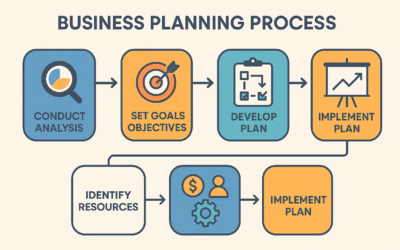As it stands, some business owners are still catching up when it comes to understanding the changes to the tax code brought on by Tax Cuts and Jobs Act of 2017. Though this legislative reform was hailed for its changes to the personal tax code, it also included tax code changes that are relevant to business owners who want to maximize their deductions without incurring any additional audits.
The following are just a few of the significant business-related changes detailed by the IRS in 2018. Whether you file your own taxes or work with an outside firm, you should take time to review these changes so as to ensure your business remains compliant with the updated tax code. For more information on strategic tax planning, consider checking out Global Resources reviews, as well.
Qualified Business Income
One of the most significant business-related changes resulting from the 2017 tax reforms focuses on so-called “qualified business income deductions.” Specifically, businesses with operational structures that include a “pass-through entity” may be able to deduct a higher amount of their business income in their annual taxes.
The new provision, known as Section 199A, allows taxpayers to deduct up to 20% of their business’ income if it is operated as a sole proprietorship, a partnership, an S corporation, a trust, or an estate. This deduction is available to those that itemize their deductions on Schedule A and those that take the standard deduction. Unfortunately, income earned through a C corporation is not eligible under this new provision.
Meal and Entertainment Expenses
Generally speaking, the 2017 tax reforms have eliminated deductions relating to “activities generally considered entertainment, amusement or recreation.” That being said, some deductions (up to 50%) still exist within this category so long as certain criteria are met. One example includes the purchasing of food or drink as part of the entertainment provided to a current or potential business customer or client.
Also, the taxpayer’s presence at an applicable instance of entertainment may qualify the expense to be deducted. However, if the cost of said food or beverage is stated separately from the entertainment on the bills filed for the deduction, the deduction will likely be denied. Finally, meals considered “lavish or extravagant” will not be eligible for the remaining deductions in this category.
Paid Family and Medical Leave
The 2017 tax reforms did add some new employer tax credits for application to expenses relating to paid family and medical leave among a business’ employees. In short, the tax credit is designed to pay back a percentage of wages paid out to employees absent from work due to sick or family leave during a 12-week period of the applicable year.
In order for this tax credit to be available, qualified employers must have a written policy in place to use it. Also, as a general rule, qualified employees must have worked for the employer for at least a year and have not earned more than a certain threshold ($72,000 in 2017) in the previous year.
This new policy is subject to further criteria, outlined here by the IRS.

0 Comments